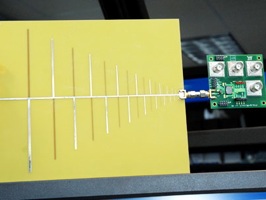National Call-In Radio Day

The Prometheus Radio Project is among the organizers of the day to help bring low-power FM to communities throughout the United States. Join people from across the country to tell Congress to open up the airwaves for more community media!
TAKE ACTION - Tell your Congressional Representative to support HR 1147.
1. Look up your Congressional Representative at Congress.org
2. Find out if they have already supported the Local Community Radio Act.
See a list of cosponsors at govtrack.us and search for Bill number HR 1147.
3. Call the Congressional Switchboard at: (202) 224-3121 and ask to be connected to your Representative's office.
If your representative is not a cosponsor tell he/she to support expanding Low Power FM all across the country and cosponsor the bill.
If your representative is a cosponsor ask him/her to reach out to Congressional Leadership to let them know that this is an important priority around the country.
Background:
In 2000, the FCC established Low Power FM radio service and the same year Congress acted to limit LPFM, pending the results of an interference study. This study was released in 2003, after an expenditure of $2.2 million in taxpayer dollars, and proved that LPFM would not provide interference to existing stations. There are currently over 800 LPFM stations operated by schools, churches, civic groups, and other nonprofit organizations across the country. However, it's time, as the authors of this study and the FCC recommended, to expand LPFM to its intended service parameters. The Local Community Radio Act (HR 1147/S592) would expand Low Power FM radio stations and open the airwaves up to potentially tens of thousands of new community radio stations across the country.
Labels: HR 1147, Local Community Radio Act of 2009, low power FM radio, low-power FM, LPFM, LPFM bill






